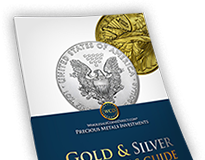
Gold and Equities In ‘Temporary’ Crash Despite Pick-up in Asian Demand
Go back a few years and you’ll remember that the gold price plunged, in part due to a massive outflow of gold from the gold-backed ETFs that had previously been flying high. There was a big supporting factor, though, in that seemingly insatiable Asian gold demand, particularly from China and India, served to counter the ETF outflows and keep gold supply-and-demand fundamentals in check. Back in 2015, Chinese demand, in particular, peaked at over 2,500 tonnes, but since then, has been in decline, falling to less than half that amount in COVID-19 affected 2020 - although, figures did seem to be picking up again by the year’s end.
Also in 2020, the big gold ETFs saw massive inflows of metal, right up until Q4, when volume growth slowed down and began to reverse. With central bank gold purchases also falling with the two biggest official buyers, China and Russia, apparently reducing purchases to zero – at least according to their official statistical announcements – and Indian and Chinese gold demand seemingly diminishing substantially, things started to, again, look far less positive for gold on the global demand front. The past couple of months, though, seem to have seen a positive turnaround in Chinese and Indian gold demand. We, thus, saw a weaker trend developing in the gold price, which fell back from a peak of over $2,050 in August 2020 to its recent big breaches of $1,800 on the downside.
So, are we returning to the situation prevailing in 2013 and 2014, when the gold ETF outflows led to a massive change of sentiment towards gold in the West? This was, at the time, seemingly counterbalanced, in part, at least, by a substantial demand pickup in Asia, possibly put down to the fall in the gold price in the highly visible U.S. markets. While there do seem to be some parallels, we are not quite so sure that recent gold price patterns are poised to repeat themselves just yet. The COVID-19 coronavirus pandemic may well have changed attitudes towards gold, in particular.
Gold does, at the moment, seem to be going through a particularly weak patch price wise, and although it keeps seeing small recoveries, it is also dropping back down below the $1,750 mark every time it seems poised to surge upwards again. The latest attack on the price took it down to the $1,720s, almost certainly due to the surge in interest rates on bond yields and an anticipated return to inflationary pressures, which took most other traded commodities down with it, too. Conversely, the U.S. dollar index rose against most other global currencies. Gold and the other precious metals, which also saw steep downturns on Thursday and Friday, look to be currently well out of investment favor, and may remain so until much later in the year, unless something causes a massive change in sentiment.
The latest steep downturn in precious metals was also accompanied by sharp falls in equities prices, with the previously high-flying NASDAQ stocks initially suffering the most, in percentage terms, before making something of a recovery on Friday. Bitcoin also fell sharply, which could indicate that perhaps all the bubbles - as bubbles they are - may be beginning to show potential signs of bursting simultaneously.
It was not only U.S. stocks that fell in the days leading up to the weekend. There were also sharp declines in global markets, not least in Asia, where both the Nikkei and Hang Seng indexes fell over 1,000 points overnight Thursday and into Friday morning. European indexes also started to follow a downwards path on Friday. Both recovered some of their lost ground when markets opened this week. However, could this be the face of things to come? It is probably too early to call last week’s activity a major sustained market crash, as yet, but with equities, Bitcoin and precious metals falling back sharply in concert, it has to be a warning sign of what could happen sometime in the months ahead. Certainly precious metals are not immune to an equities markets crash. The writer has been predicting a sharp market downturn ever since the pandemic started to spread globally, but the markets, up until now, seem to have defied the reality of how big the hit to global economies, and to the U.S. in particular, has actually been.
That precious metals had been falling alongside equities at this stage is, in itself, a warning sign of how big the eventual hit might turn out to be on individual wealth. Maybe the rise in demand for gold in Asian markets will help cushion the yellow metal’s fall, but don’t necessarily expect any resilience in the gold price to be transferable to silver and the PGMs, which are all more reliant on industrial demand patterns than gold is. The markets for these more industry-driven metals are relatively small, and thereby, have a tendency to be even more volatile.
So what lies ahead? The markets may correct back upwards for a few days, weeks even, perhaps bringing some undue investor confidence back into play. This is what happened in a similar sell-off in March of last year, as the COVID-19 pandemic began to impact Western economies. Yet, investors in all the markets – equities, Bitcoin, precious metals, and other commodities – all seemed to take this economic impact as a buying opportunity.
The writer is not so sure that this will happen again this time around, although there has been an initial recovery in both precious metals and equities markets at the start of the current week in Asia and Europe. Fed chairman Powell’s latest predominantly bleak statement suggests that any U.S. economic pickup, though, is not nearly as robust as the optimists would have us believe, and an exit from the COVID-induced recession is possibly far farther into the future than previously reckoned. This is despite the vaccine rollout, which seems to be patchy in the U.S., with substantial resistance to vaccination take-up – particularly in Republican-voting areas, many of which are rural.
European markets remain shaky as the virus pandemic is only slowly beginning to loosen its grip, while much of the less developed world is probably lagging behind in virus control and will see continued economic stress accordingly. Even those Asian economies that seem to be making the most progress in bringing the virus under control are primarily export-reliant for their overall economic performance, meaning that if Western economies remain weak, then so will the markets for the Asian export trade.
The week ahead will be an interesting one, not least in regard to indicating whether the downturn in the markets is likely to be sustained in the short term, or is just a flash in the pan, after which, equities and Bitcoin return to, what the writer believes, is an unjustified positivity. There is what appears to be downside resistance for gold to fall further, at around the $1,720 level, but, if the yellow metal breaks down through that, it could well fall to the $1,680s – a level not seen since early Q2 2020 – or perhaps even lower. But Asian buying support tends to be price-sensitive and could come back in with strength at lower gold prices. Silver and palladium would seem to be more vulnerable to a sharp downwards correction, if economies do not start to pick up. Platinum looks, at the moment, to be a little more resilient, but it, too, could come back sharply in an overall market malaise.
There was some positive news over the weekend, which has already impacted markets positively. Both the Biden administration’s proposed $1.9 trillion stimulus program and the approval of the single-dose Johnson & Johnson vaccine already seem to be helping to reverse the downwards trend in the markets – at least temporarily. While not all aspects of the Biden stimulus program are likely to pass through the Senate unscathed, it seems probable that perhaps up to $1.5 trillion of it will be putting another large tranche of stimulus money back in play.
As to the new vaccine, the fact that it only requires a single dose and does not need to be kept at ultra-low temperatures, thus considerably mitigating transportation and administration logistical obstacles, could be something of a vaccine game-changer, in terms of take-up. There may, thus, be a path back to somewhere near normality in sight, which could be a positive for markets – that is, until the true severity of the virus toll on the U.S. economy becomes fully apparent.






